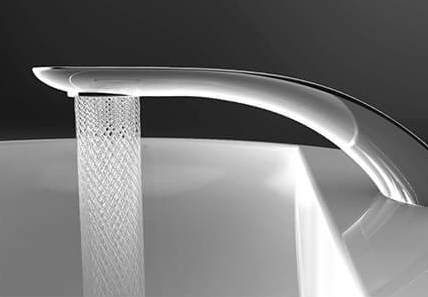Architizer's A+Product Awards is open for submissions, with the Extended Entry Deadline fast approaching on Friday, February 23rd. Get your products in front of the AEC industry’s most renowned designers by submitting today.
Architecture is an imperfect process. The relationship between client, designer and builder has traditionally been particularly fraught, with the three parties usually spending a lot of their time grumbling and rolling their eyes at each other. For architects, getting yelled at by a client or scoffed at by a contractor is pretty much a rite of passage. It’s not surprising that architects, ever the perfectionists, have tried to design a better way of doing business by rethinking project delivery methods. If you’re unsure what “project delivery method” means, check out an earlier article on Integrated Project Delivery here.

All diagrams via Perspecta 47
In traditional Design-Bid-Build projects, the client separately hires the contractor and architect and the two must cooperate, or fight, to get their jobs done. The architect usually starts their job first and will design the building, eventually producing a bid set of drawings. Builders then bid on the project based off of the drawings, and the winners take over and must adapt the architect’s drawings to the realities of the site and build the building.
The architect and the builders generally go back and forth like a divorcing couple who can’t wait until the day the project is done and they never have to speak to each other again. Subcontractors and consultants on either side have to wade through this web of misery, and the chaotic communications end up with a lot of crossed wires, misdirections and harried last-minute changes. The whole thing is stressful and kind of a bummer.

Design-Build is a project delivery method that merges the designer and builder so that the two are part of the same organization that handles the entire process. Design-Build companies could be construction companies that have in-house architects that handle design, or, in the case of Architect-Led Design-Build (ALDB), they could be architecture firms, like GLUCK+, where their approach is vertically integrated and the same design team moves on site to manage the construction trades.
Having one organization handle both aspects of the process means that “buildability” can be part of the design process from day one, and aesthetics can be a consideration in every late-phase on-site decision. All of the consultants and subcontractors are led by one firm and have one place to go for answers. The result should be a cheaper and prettier building and a happier team overall.

New York City’s GLUCK+ started using Architect-Led Design-Build 25 years ago and has since used the arrangement on a range of projects across the country. “We started Design-Build because we recognized that the traditional model is broken,” says Stacie Wong, principal at GLUCK+. “We haven’t yet found a project type that couldn’t benefit from ALDB.” The firm has embraced the model because it affords them greater quality control over their projects from start to finish, with the added benefit that they can make more money when they operate as the architect and construction manager.

© GLUCK+
Lady Liberty Academy Charter School by Gluck+
The model has been particularly helpful for projects where money is tight like their work for nonprofits like the East Harlem School, Lady Liberty Academy Charter School and the Cary Leeds Center for Tennis and Learning. Because Design-Build projects have the same people doing both design and construction, and building trades are able to give feedback on feasibility early on, designs on DB projects can work with more informed ideas about expense and constructability and therefore avoid cost overruns and value engineering that often occur late in the building process and hack away at a building’s potential.
“The beauty of ALDB,” Wong says, “is that it values interaction with local construction trades, often early in the process at the end of schematic design or the beginning of design development, to provide insight into construction methods and/or materials that are prevalent or specialties of the area.” This information not only hones in on project budget, but very often influences the fundamental design concept to make it richer, more conceptually rigorous.

© GLUCK+
Lady Liberty Academy Charter School by Gluck+
For architects interested in working on projects with a big social impact but a limited budget, Design-Build could be a great way to make it work. Unlike other innovative project delivery methods, like IPD, Design-Build does not require that the client and architect unify into a single entity, something that requires a lot of trust and coordination that might only be possible in the best of circumstances but can’t be expected to work out all the time. Architect-Led Design-Build does have trade-offs.
It requires that the architects learn more about construction and expand their expertise. Some will be into this, while others will want to stick with what they know. Wong thinks the benefits come to those who are willing to get out of their routines and try something new. “When a building can meet the mission statement for an organization on an extremely limited budget, it is a reminder of how powerful the ALDB process can be,” Wong says. The firm looks forward to expanding this tool to achieve even greater success.
Architizer's A+Product Awards is open for submissions, with the Extended Entry Deadline fast approaching on Friday, February 23rd. Get your products in front of the AEC industry’s most renowned designers by submitting today.









